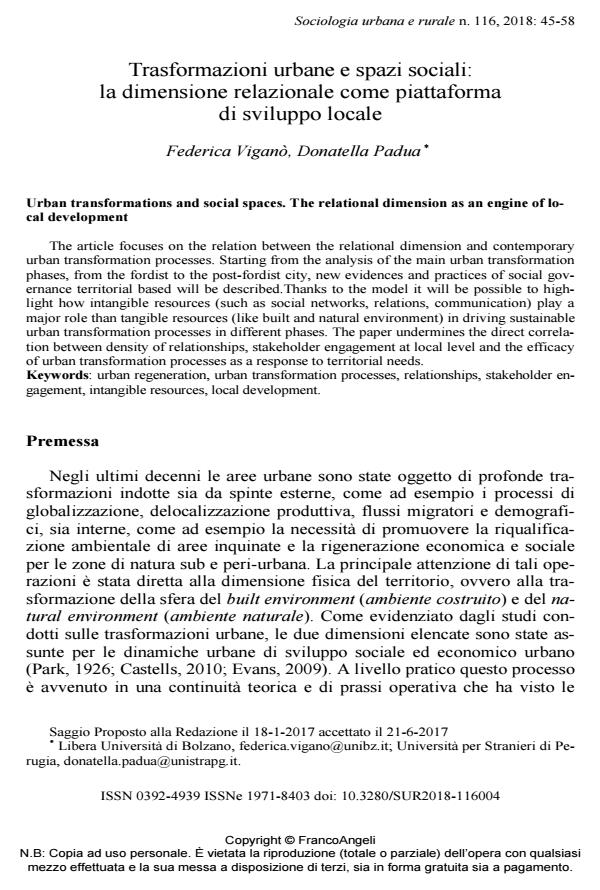Urban transformations and social spaces. The relational dimension as an engine of local development
Journal title SOCIOLOGIA URBANA E RURALE
Author/s Federica Viganò, Donatella Padua
Publishing Year 2018 Issue 2018/116
Language Italian Pages 14 P. 45-58 File size 190 KB
DOI 10.3280/SUR2018-116004
DOI is like a bar code for intellectual property: to have more infomation
click here
Below, you can see the article first page
If you want to buy this article in PDF format, you can do it, following the instructions to buy download credits

FrancoAngeli is member of Publishers International Linking Association, Inc (PILA), a not-for-profit association which run the CrossRef service enabling links to and from online scholarly content.
The article focuses on the relation between the relational dimension and contemporary urban transformation processes. Starting from the analysis of the main urban transformation phases, from the fordist to the post-fordist city, new evidences and practices of social governance territorial based will be described.Thanks to the model it will be possible to highlight how intangible resources (such as social networks, relations, communication) play a major role than tangible resources (like built and natural environment) in driving sustainable urban transformation processes in different phases. The paper undermines the direct correlation between density of relationships, stakeholder engagement at local level and the efficacy of urban transformation processes as a response to territorial needs.
Keywords: Urban regeneration, urban transformation processes, relationships, stakeholder engagement, intangible resources, local development.
- Between Old and New Needs: The Issue of Inclusion of the Elderly before, during and after COVID-19. The Case of Rural Areas in Canada-Québec and Italy Marco Alberio, Rebecca Plachesi, in Interventions économiques /2024
DOI: 10.4000/11qw5
Federica Viganò, Donatella Padua, Trasformazioni urbane e spazi sociali: la dimensione relazionale come piattaforma di sviluppo locale in "SOCIOLOGIA URBANA E RURALE" 116/2018, pp 45-58, DOI: 10.3280/SUR2018-116004